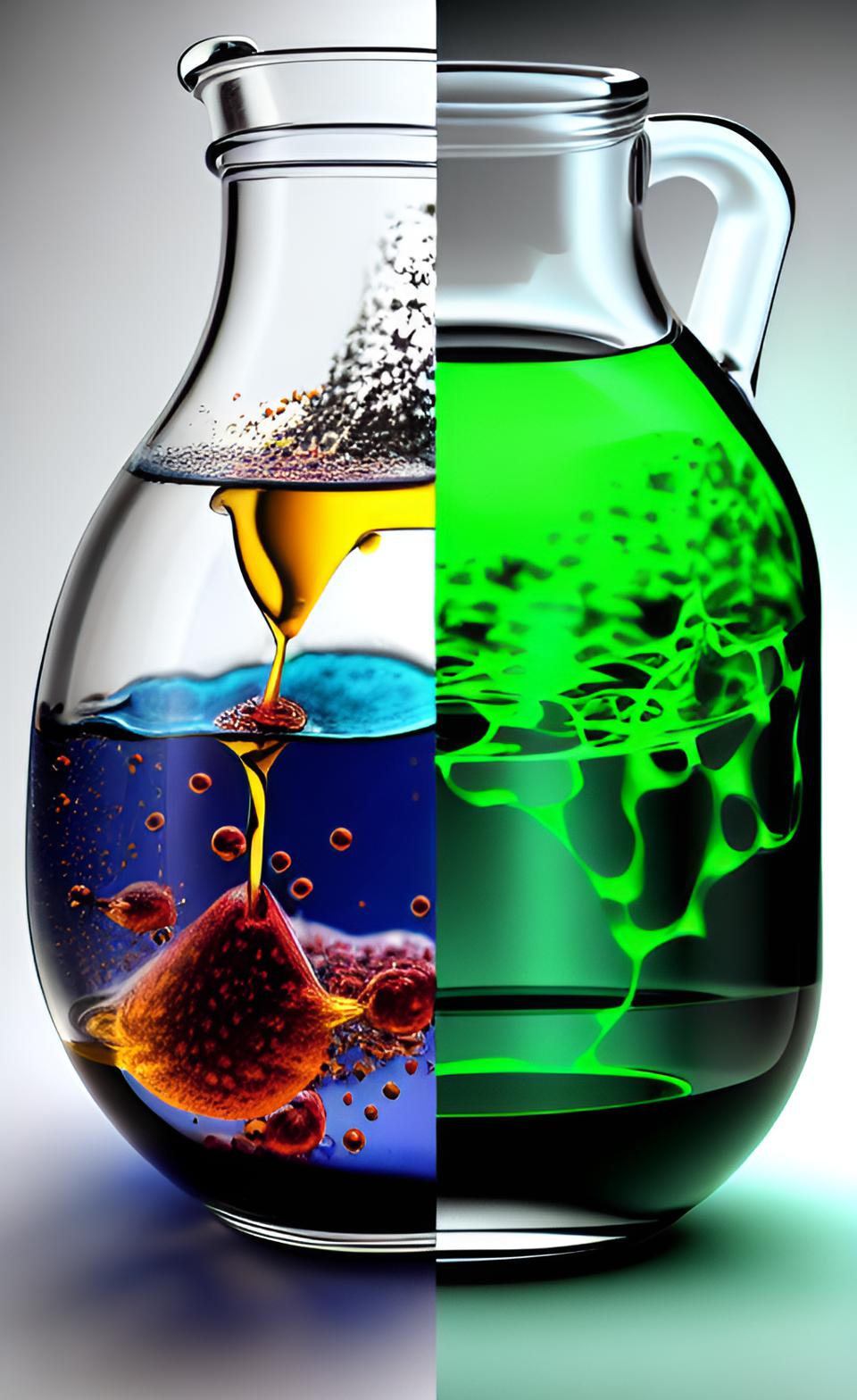- Air Homepage
- Alberta Air Quality
- Air Quality Dispersion Modelling
- What Is Acid Deposition
Check out the science behind what is acid deposition.
Here, I introduce what is acid deposition modelling and assessment, specifically using CALPUFF and other modelling tools to assess the environmental impact of sulfur dioxide (SO2), nitrogen oxides (NOx), and ammonia (NH3) emissions.
Unmasking Acid Rain: Save the Scenery - Could a whisper of sulphur silently scar forests and sour soils for generations, until one powerhouse model like CALPUFF swoops in to map the mayhem and arm industries with the intel to fight back? Hopefully not.
Determining the deposition of acidic compounds, understanding the effects of emissions on ecosystems, and using regulatory frameworks to ensure compliance are all explained below. This page explains why industries use complicated chemical models. Check it out.
- Learn how acid deposition affects nature, but most people don't see it.
- If you understand acid deposition, you can decode complex environmental issues and make sense of real-world impacts like acid rain.
- CALPUFF is a powerful tool that scientists use to predict pollution's path.
- If you work in industrial operations, you need to know how acid deposition works.
- Acid deposition isn't just for environmentalists - it's important for industrial pollution management too.
- Models like CALPUFF help prevent over-predictions and misinterpretations of pollution data.
- Sulfur and nitrogen deposits can dramatically alter ecosystems.
 Defining acid deposition
Defining acid depositionHere are some key points:
- This model improves the accuracy of assessing how emissions become acidifying species in the atmosphere using CALPUFF and RIVAD/ISORROPIA.
- Acid deposition modeling is required for facilities emitting significant amounts of SO2, NOx, or NH3.
- Acid deposition is evaluated over multiple years using meteorological data.
- A comprehensive understanding of cumulative impacts requires factoring in background acidifying species as well as neutralizing base cations.
- Compliance with regulations: Before doing assessments, especially with models other than CALPUFF, facilities need to submit a detailed plan.
- To protect the environment, the central focus is on ensuring accurate, science-based evaluations of how industrial emissions contribute to acid rain and soil acidification.
We start with...
Regional Modelling
Regional modelling is rarely used for Environmental Impact Assessments (EIAs) and is more commonly conducted for regional environmental management or research purposes, sometimes at the request of a regulatory Director.
The process of acidification occurs when acidic inputs enter a body of fresh water through weathering, invasion of acidifying gases, or reduction of acid anions. Freshwater acidification is mostly caused by sulphur oxides and nitrogen oxides (NOx) entering the water from atmospheric depositions and soil leaching.
What is Acid Deposition in British Columbia?
In BC, CALPUFF (particularly with the RIVAD/ISORROPIA chemical mechanism) is recommended for producing regional estimates of sulphur and nitrogen deposition. This mechanism improves accuracy in nitrate, NOx, and sulphate transformation rates.
 Solutions to acid rain
Solutions to acid rainThe text of the provincial guidelines outlines specific input options and settings for regional-scale modelling, including considerations for ozone, ammonia, and hydrogen-peroxide (H2O2) data.
To go a little deeper, the CALPUFF tool is most-recommended for estimating regional sulfur and nitrogen deposition. CALPUFF V6.42 offers advanced chemical transformation options, including the RIVAD/ISORROPIA mechanism, which scientists use to figure out how pollution moves through the air and falls to the ground and shows improved prediction performance over previous software.
Wet and dry deposition estimates can be done using this mechanism. Specific settings for RIVAD/ISORROPIA are designed for ozone and ammonia data input, nighttime loss rates for different substances, and H2O2 handling. As a result, these atmospheric chemical reactions can be more accurately modelled.
For Alberta
In acid deposition modelling, both the deposition of acidic compounds and natural soil processes are taken into account. What is acid deposition modelling needed for? An assessment is required for facilities emitting SO2, NOx or NH3. If a facility's emissions exceed a certain threshold, they may have to do an acid deposition modelling assessment. The threshold is calculated based on the total hydrogen ion equivalent of SO2, NOx, and NH3.
Acid deposition happens when pollutants like sulphur dioxide and nitrogen oxides fall onto the earth, potentially harming ecosystems. Managing deposition requires measuring pollution, estimating its spread, and checking its effects on nature.
Alberta's Acid Deposition Management Framework (ADMF) helps us address these issues and supports sustainable industrial growth. The ADMF tells you how to determine if acidifying deposition exceeds equilibrium (critical load). For sources with significant SO2 or NOx emissions, please refer to the ADMF document on the Alberta Environment and Parks website.
You can use CALPUFF or another model recommended by the Alberta Environment and Protected Areas (AEPA) for regional acid deposition modeling. To model acid deposition, you need to pick the right chemical transformation mechanism to include all necessary acidifying species.
Calculating What is Acid Deposition Using CALPUFF: The text in this section of the Alberta guideline provides guidance for using the CALPUFF model in acid deposition assessments, emphasizing the use of the RIVAD/ISORROPIA + aqueous chemical mechanism.
Key points include:
- Chemical Mechanism: CALPUFF should be set to use the RIVAD/ISORROPIA mechanism with specific settings for NOx emissions and chemistry, including NO and NO2 emissions.
- Data Requirements: Onsite hourly O3, NH3, and H2O2 data should be used if available. If not, default values provided in the appendices should be used.
- Long-Term Modelling: Acid deposition is assessed annually, with five years of meteorological data. The median annual acid deposition at each receptor is used for comparison against critical load maps.
- Background Deposition: Background acidifying species can be determined through monitoring or modelling. It must be included in all scenarios to assess cumulative impacts.
- Neutralizing Species: Deposition of base cations, which may neutralize acid, can be considered in areas with significant crustal disturbances, based on professional judgment or monitoring data.
here are some details to consider: For acid deposition assessments, use the RIVAD/ISORROPIA + aqueous chemical formulation (and set the switches, MCHEM = 6, MAQCHEM = 1, MLWC = 1). According to guidance similar to OLM modelling (used for estimating nitrogen transformations), NOx emissions from sources must be specified as NO and NO2.
 Predicting long-term environmental conditions
Predicting long-term environmental conditionsIt's better to use onsite hourly data for ozone (O3, if available) for making post-release chemical reaction estimates. In the absence of hourly data, use the O3 time series from Appendix F of the Alberta Air Quality Modelling Guideline, selecting urban or rural data based on the project's setting.
Calculating acid deposition requires accurate NH3 and H2O2 values. Whenever possible, use current onsite or remote-sensing data, otherwise use the default monthly NH3 values and hourly H2O2 values from Appendix G.
An annual total acid deposition value should be calculated for each receptor considered, based on five-year meteorological data. For comparison with critical load maps, use the median of these annual totals per receptor.
Monitoring or modelling can be used to determine background deposition values. Data from upwind sites can be used if they're available, or from model output if they're not. To consider cumulative impacts, background deposition should be included in all scenarios.
In areas with significant crustal disturbances (such as mining or construction), calculating neutralizing-species deposition (for these special ingredients that help balance out the acidity in the environment) might be a good idea. Acid falls from the air and gets canceled out by base cations (from the soil or rocks). This balancing act can prevent acid damage.
Making decisions in this context requires special care. Proponents should use professional judgment based on monitoring data or literature, with the Director's discretion.
Acid Deposition with Other Models
If you're not using CALPUFF for acid deposition assessments:
CMAQ (community multiscale air quality model) is a popular alternative. This model is also provided by the United States EPA. In addition to handling acid deposition and eutrophication (where nutrients from fertilizers, sewage, or agricultural runoff cause algae to grow quickly in water bodies), it simulates air pollutants of concern, like ozone, particulate matter, and other air contaminants.
For an acid deposition assessment n Alberta using any model other than CALPUFF, you'll need to submit a modeling plan to the Director. Before you start modelling, you have to get written permission from the Director.
You're a Busy Industrial Professional
Calvin Consulting Group Ltd. understands how important air quality assessments are. When you're seeking regulatory approval or preparing for an emergency, you need reliable air quality dispersion modelling. That's what we do.
Our meteorologists and dispersion modelers have over 30 years of experience. In addition to modelling, we train regulators and use industry-standard tools like AERMOD and CALPUFF to process everything, like meteorological data, terrain, and emissions sources. To make sure you're not just meeting, but exceeding environmental and safety regulations, we provide comprehensive reports.
Stakes are high. With Calvin Consulting's expertise in dispersion modelling, you can protect human health, the environment, and your business operations. Make sure it's right. Get personalized, premium service from Calvin Consulting Group Ltd. Barry can be reached at...

Come on, let's get your project moving. We don't compromise on air quality.
Clean air is our Passion...Regulatory Compliance is our Business.
Airborne sulphur and nitrogen compounds cause acid deposition.
We need good info to manage it properly. CALPUFF, for example, is a computer model that offers precise regional-scale calculations, which avoid prediction biases pertaining to deposition. We can use CALPUFF to manage environmental risks for industries regulated by environmental laws because it analyses and explains how acid deposition happens.
Do you have concerns about air pollution in your area??
Perhaps modelling air pollution will provide the answers to your question.
That is what I do on a full-time basis. Find out if it is necessary for your project.
Have your Say...
on the StuffintheAir facebook page
Other topics listed in these guides:
The Stuff-in-the-Air Site Map
And,
Thank you to my research and writing assistants, ChatGPT and WordTune, as well as Wombo and others for the images.
OpenAI's large-scale language generation model (and others provided by Google and Meta), helped generate this text. As soon as draft language is generated, the author reviews, edits, and revises it to their own liking and is responsible for the content.

New! Comments
Do you like what you see here? Please let us know in the box below.